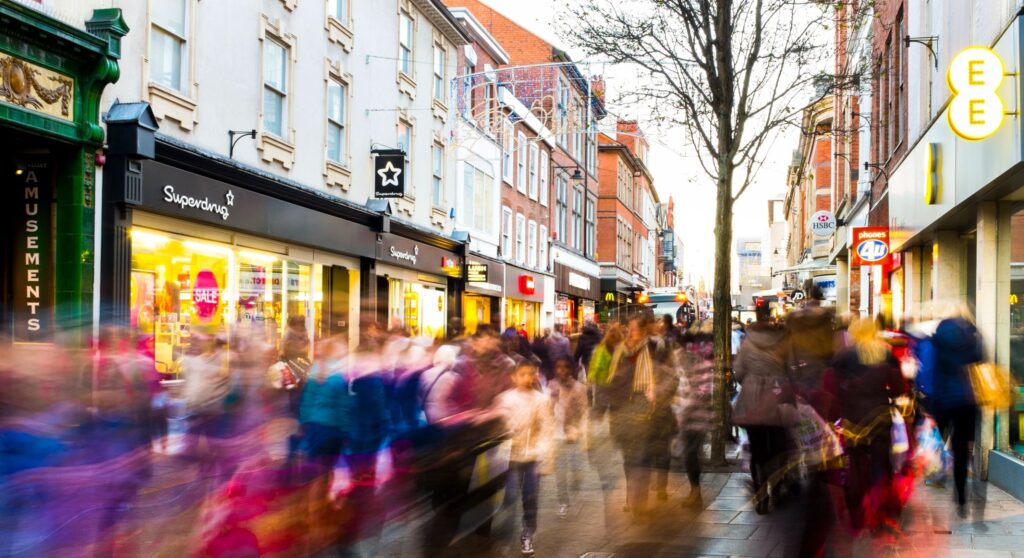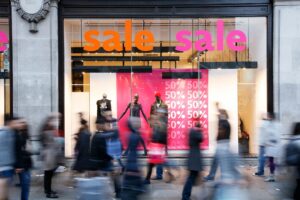Online buying has become customary among Americans with an evident change in consumer buying behaviour. List the most recent purchases you’ve made in a brief manner. There’s a good chance that a lot of these things were ordered online. Even some customers are using online retailers to get their pet food, cosmetics, and grocery orders filled.
If you run a business, you might also be looking for innovative ways to use internet purchasing to engage your clientele. We’re here to assist you in refining your strategy. In this article, we’ll look at the condition of online purchasing in the US so that you may prepare your company for the current digital environment.

Consumer buying behaviour observed in the US
In some ways, American’s consumer buying behaviour are similar to those of customers worldwide. Although some consumer groups are reflecting these trends more than others, taken as a whole. They highlight the opportunities and challenges that consumer-focused businesses may have in the near future. The following five facts regarding US consumers today are important for businesses to remember.
Aged women are leading the pack when it comes to saving money
Numerous methods are being used by American customers to cut back on their spending. 49 percent of respondents as a whole concurred that they are “increasingly seeking for ways to save money.” Women in the millennial generation (aged 21 to 34) who are mothers agreed with the statement in 72 percent of cases. That gives us a fair bit of idea in how the consumer buying behaviour has panned out. In fact, millennial moms are considerably more likely than the typical American consumer to practise frugal habits. That includes price comparison, frequent use of coupons and loyalty cards, seeking out discounts and special offers. Visiting many stores to discover the best pricing, and purchasing more items in bulk. More than 40% of millennial moms reported that they are dining at home and cooking from scratch more frequently. They are also more likely to change their eating habits.
Despite being brand loyal, cutting costs is preferred while purchasing their preferred brands
52 percent of those who responded to the US survey down from 64 percent in 2012 said they had changed their purchasing habits in relation to their preferred brands. That an alarming shit in the consumer buying behaviour pattern. The tendency is especially noticeable among Hispanic consumers, who reported changing their purchasing habits by 61 percent of them. Many American customers have stuck with their favourite brands while keeping a closer eye on their spending. They opt to buy solely with coupons or during sales, looking around for stores that offer the brands at lesser prices, or making smaller purchases.
They are currently much less inclined to “trade down.”
A detailed study of consumer buying behaviour is absolutely pivotal. Only 9% of consumers admitted to trading down, or choosing less expensive or private-label products over their favoured brands. With 14 percent, millennial moms had the highest percentage of down-traders, in line with their propensity for conserving money. Bottled water, household cleaning goods, pasta, and rice were the most vulnerable product categories (those with the greatest trade-down rates), possibly indicating that branded products in these categories haven’t differentiated themselves enough.
Some splurge on alcoholic beverages and personal-care products.
Exhibit 2 demonstrates that the proportion of US consumers that traded up and down is equal. Compared to only 6% in 2013 and 2014, 9% of consumers upgraded their purchases in specific categories in 2015. The two categories with the highest trade-up rates were alcoholic drinks and personal care items. Indicating that higher-end brands in these markets were successful in convincing customers that their products were worthwhile investing in which shows the influence in consumer buying behaviour.
They’re willing to shop across channels.
Where individuals shop is a significant change in consumer buying behaviour as well. US consumers asserted that they had migrated up to one-fifth of their spending to each of the three channels of membership shops, hard discounters, and online pure-play retailers. In the US market, the three channels have experienced the highest growth rates since 2009; their stated behaviour is consistent with real retail sales data. (Online grocery’s position in US retail is still small, but given rising consumer interest and the channel’s explosive expansion in other countries like China, France, and the UK, sales in the US market are certain to increase soon.)
THE great consumer behavior shift
The next-normal trends have a substantial impact on the consumer buying behaviour of the US consumer group. Five reasonably sized client segments, each motivated by optimism, health, and financial concerns, have been found. These five market groups each demonstrate consumer trends to a varying degree and share the following traits:
Wealthy and unaffected: These consumers make over $100,000 a year, skew male (60 percent), and exhibit general optimism about the future (approximately 20% greater than the overall US consumer population). During the pandemic crisis, they can typically stay at home, which enables them to do more internet shopping. Due to higher job stability, this group is marginally less price sensitive than other cohorts.
These consumers are being uprooted and underemployed, which is having a great negative impact on their wallets and health. They are frugal with their spending and pessimistic about the state of the economy going forward. This segment is, unsurprisingly, limiting their purchases to necessities and good value, switching brands, and, when possible, shopping online.
Despite being financially stable, this population has anxiety. They tend to be 65 years of age and older, and they have a negative outlook on the economy in the wake of COVID-19. That has significantly changed their behaviours. With above-average worries about safety and well-being as well as worries about being able to obtain necessary supplies, this group has stated the greatest demand for hygiene transparency.
These consumers, who are struggling to make ends meet. They are being frugal with their spending and believe that COVID-19 has had a significant negative influence on their jobs and job security. Minority groups and rural areas are heavily represented in this group. They are very less likely to be able to stay at home. That also means that they highly less likely to participate in the homebody economy, but they are moving aggressively in the direction of shopping for necessities and good deals.
Tapping consumer buying behaviour is the need of the hour
What actions ought merchants and manufacturers of consumer goods to take in light of these changing consumer buying behaviour? How can they position themselves in the US market to succeed in the future? They would do well, in our opinion, to think about the following imperatives, which each speak to one or more of the above-mentioned behaviours.
You may also want to read – Best Gift shops you will find in Las Vegas







